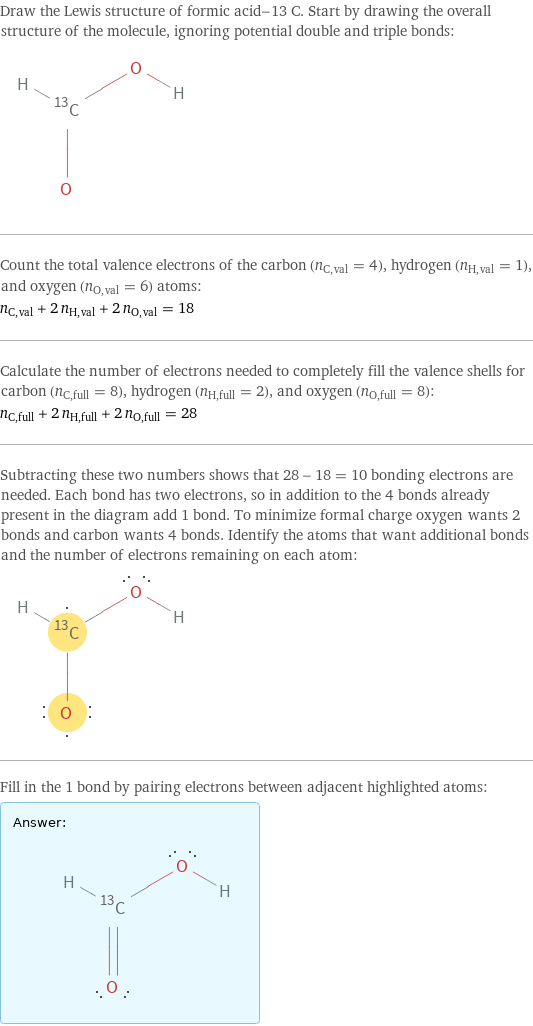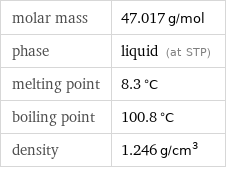Input interpretation

formic acid-13 C
Chemical names and formulas

formula | H^13CO_2H Hill formula | (13C)H_2O_2 name | formic acid-13 C IUPAC name | hydroxyformaldehyde alternate names | hydroxyformaldehyde | hydroxymethanal mass fractions | O (oxygen) 0.681% | C (carbon) 0.277% | H (hydrogen) 0.0429%
Lewis structure

Draw the Lewis structure of formic acid-13 C. Start by drawing the overall structure of the molecule, ignoring potential double and triple bonds: Count the total valence electrons of the carbon (n_C, val = 4), hydrogen (n_H, val = 1), and oxygen (n_O, val = 6) atoms: n_C, val + 2 n_H, val + 2 n_O, val = 18 Calculate the number of electrons needed to completely fill the valence shells for carbon (n_C, full = 8), hydrogen (n_H, full = 2), and oxygen (n_O, full = 8): n_C, full + 2 n_H, full + 2 n_O, full = 28 Subtracting these two numbers shows that 28 - 18 = 10 bonding electrons are needed. Each bond has two electrons, so in addition to the 4 bonds already present in the diagram add 1 bond. To minimize formal charge oxygen wants 2 bonds and carbon wants 4 bonds. Identify the atoms that want additional bonds and the number of electrons remaining on each atom: Fill in the 1 bond by pairing electrons between adjacent highlighted atoms: Answer: | |
Basic properties

molar mass | 47.017 g/mol phase | liquid (at STP) melting point | 8.3 °C boiling point | 100.8 °C density | 1.246 g/cm^3
Units

Liquid properties (at STP)

density | 1.246 g/cm^3
Units

Non-standard atom properties

C-13 | 1
Chemical identifiers

CAS number | 1633-56-3 PubChem CID number | 11115974 PubChem SID number | 24856883 SMILES identifier | C(=O)O InChI identifier | InChI=1/CH2O2/c2-1-3/h1H, (H, 2, 3)/i1+1/f/h2H RTECS number | LQ4900000 MDL number | MFCD00003298
Safety properties

flash point | 51.11 °C